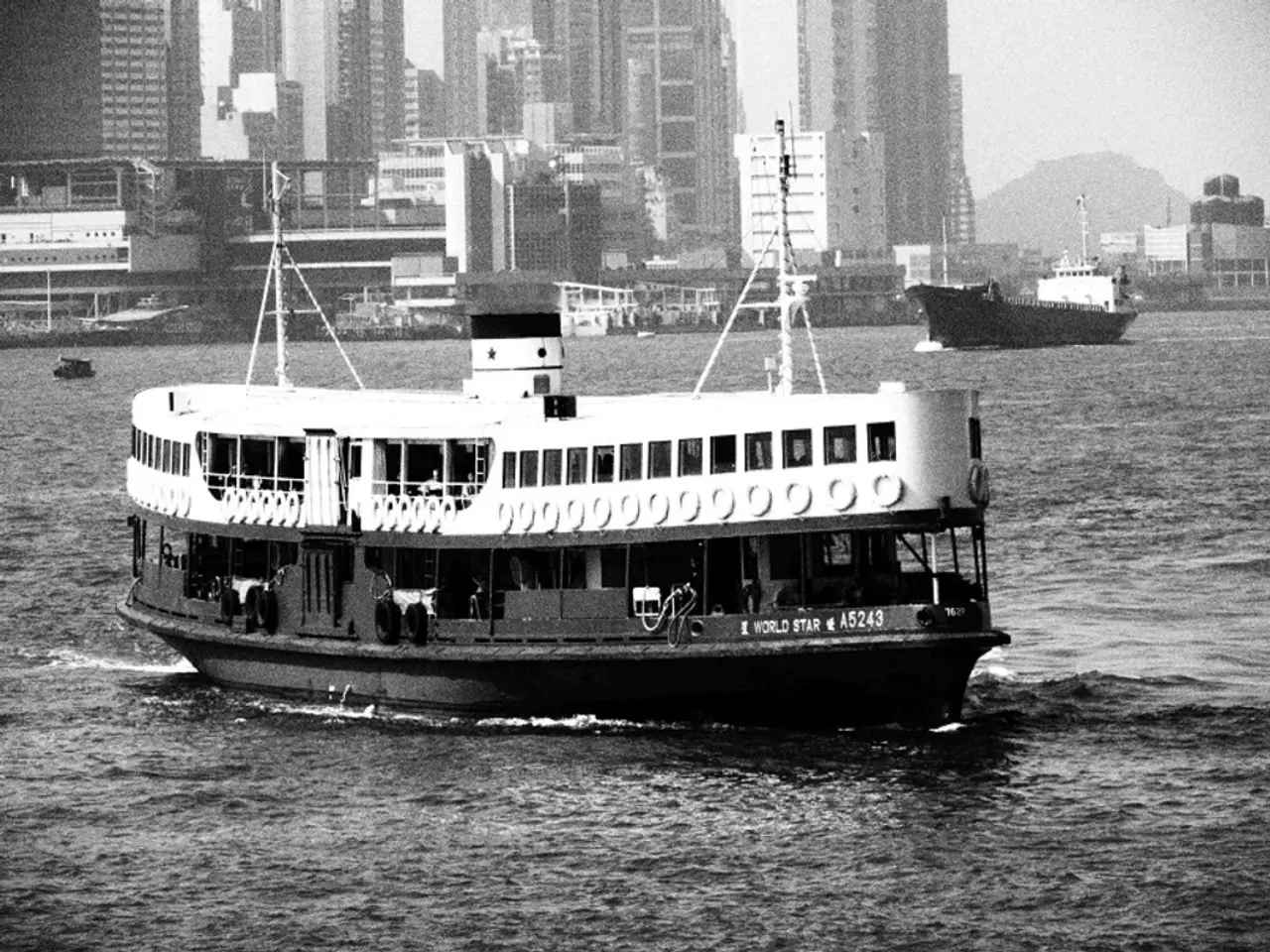Disastrous Figures for the North Baltic Waterway Project
Revised Article:
The Decline in Vessel Transits Through the Kiel Canal
No Joy for the Kiel Canal Authority
Last year marked a bleak milestone for the Kiel Canal: for the first time since its post-war inception, the transit of less than 25,000 vessels was recorded. To put it bluntly, it's been a rough ride.
The skippers at the Kieler Nachrichten are painting a grim picture this year, reporting the meager passing figures. The General Directorate of Waterways and Shipping (GDWS) evaluation, usually shared with the public by mid-January or early February, has been delayed this year, with a late February release projected.
A Tough Year for the Waterway
The drop in vessel traffic is nothing to boast about. According to Jens-Broder Knudsen, head of the Initiative Kiel Canal, shipbrokers Sartori & Berger and UCA United Canal Agency have noted a steep decline of up to ten percent in vessel passage.
Construction Woes
On a brighter note, 2024 might go down in history as the year the canal expands, offering some relief for shipowners. The ongoing construction, however, has led to a speed restriction of 12 km/h on the canal since July 1, 2023, to shield the eroded banks. Rest assured, the work is progressing, but there's a potential three-month shutdown of a lock chamber in Brunsbüttel looming from May, where new rails for the gate bogies of a sliding gate are needed.
Shifting Routes
Shipowners are already whispering amongst themselves about rerouting their vessels around Skagen if the closure goes ahead. Knudsen, who is also the managing director of Sartori & Berger, shares this sentiment.
A Downward Trend Spanning Over a Decade
It’s not just this year that’s been a struggle for the Kiel Canal. The vessel traffic has been on a downward spiral for over ten years now. In 2014, a whopping 32,600 vessels graced its waters. Knudsen admits that the size of middle ships has been shrinking, impacting the revenue of the approximate 300 canal pilots.
Prospects on the Horizon
Nevertheless, there is a glimmer of hope. If the canal expansion is completed successfully and the speed limit can be lifted, shipowners may be drawn back to the waterway. As David-Christopher Müller, second elder of the NOKII pilotage brotherhood from Kiel, rightly points out, "Reliability is crucial in the decision for the canal."
As we wait for the GDWS to release the complete traffic data for the canal, we can only speculate about the impact on cargo quantities and ship sizes, both of which are significant indicators of the canal’s performance. One thing’s for sure: the Kiel Canal continues to be a strategic maritime passage, and its future is closely tied to the ongoing maintenance, infrastructure upgrades, and wise management of regional waterways.
Source: Kieler Nachrichten from 15.02.2025 by Frank Behling[2][3][4]
Enrichment Insights:- The Kiel Canal spans 98 kilometers, with a width of 160 meters and a depth of 11 meters. It boasts seven high-level bridges providing approximately 43 meters of clearance for ships below them[2].- The Kiel Canal connects the North Sea and the Baltic Sea, offering the shortest, safest, and most cost-effective passage for maritime traffic between these seas[2].- Vessels navigating the Kiel Canal include large container ships, bulk carriers, tankers, and ferries, indicating significant maritime activity[5][1].- Aside from the occasional navigational incident, such as the Portugal-flagged cargo vessel collision with a dolphin (a type of marine structure) in May 2025, the canal remains operational[4].- Regulatory and environmental factors may influence shipping through the canal in the future[2]. Additionally, infrastructure issues on related waterways, like the Elbe-Lübeck Canal, can indirectly impact traffic volumes on the Kiel Canal due to constrained alternative routes[3].
- The decline in vessel traffic through the Kiel Canal has also been felt elsewhere, with industries such as finance and automotive likely experiencing reduced trade, given the importance of the route for the transportation of goods.
- The projected expansion of the Kiel Canal in 2024 could bring new possibilities for businesses in the marine transportation industry, presenting an opportunity for growth and increased efficiency.
- As the Kiel Canal continues to face challenges, it's crucial for management to explore partnerships with other waterway authorities to ensure a robust and sustainable maritime infrastructure that benefits various business sectors, including freight, shipping, and logistics.






